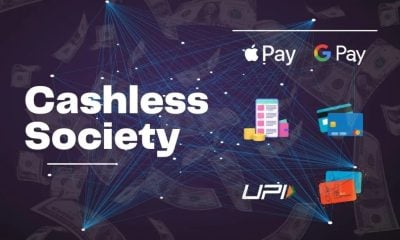The “Repo” Fiasco; the Fed’s Cash Injections Send Stocks Soaring
by Mike Whitney, The Unz Review:
 A five-alarm fire has broken out in a little known, but critically important area of the financial system where high-quality bonds are swapped for cash. The “repo” market, which is short for repurchase agreements, is part of the nondeposit, shadow banking system that remains largely unregulated despite the fact that it was ground zero in the 2008 financial crisis.
A five-alarm fire has broken out in a little known, but critically important area of the financial system where high-quality bonds are swapped for cash. The “repo” market, which is short for repurchase agreements, is part of the nondeposit, shadow banking system that remains largely unregulated despite the fact that it was ground zero in the 2008 financial crisis.
On September 17, 2019, the repo market was whipsawed by a sudden spike in short-term interest rates that rose from the Fed’s target rate of roughly 2% to an eye-popping 10% in a matter of hours. The incident, that put traders into an immediate frenzy, sent the Fed scrambling for the printing presses where it swiftly rolled-off $75 billion to finance additional short-term loans and to add liquidity to a market badly in need of cash. The Fed’s efforts did in fact bring rates back down to the 2% target-range but at great cost to its credibility. Despite repeated assurances that the financial crisis was over, the Fed has resumed pumping $60 billion per month into a market that is liquidity-starved and dangerously out-of-whack. In truth, the only thing preventing another spike in rates followed by an excruciating debt cascade, is the Central Bank’s ability to bury the problem under a mountain of freshly-minted dollar bills. Absent that, another cataclysmic crash would be unavoidable. Check out this excerpt from an article from Wall Street on Parade:
“According to the data made available on the public website of the New York Fed, since September 17, 2019 it has funneled a cumulative total of $6.6 trillion to some of the 24 trading houses on Wall Street that are known as its “primary dealers.” The giant sum has been sluiced to Wall Street in the form of repurchase agreement (repo) loans without any details being provided to the elected representatives in Congress as to which firms are getting the money or what it’s being ultimately used for.” (“Fed repos have plowed $6.6 trillion to Wall Street in 4 months”, Wall Street on Parade)
The Fed is swapping cash for collateral of unknown quality. The public doesn’t know the terms under which these agreements have been made nor do they know whether the banks are concealing their own insolvency as they did following the collapse of Lehman Brothers in September 2008. What we do know, however, is that the Fed has provided a “cumulative total of $6.6 trillion” at the discounted rate of 1.55% to the most distrusted institutions in America without any congressional oversight, without any independent review of the process, and without the American people having the slightest idea of the risks that are involved in blindly rolling over trillions of dollars of short-term loans to these thoroughly corrupt and totally unreformable financial institutions.
The Fed has no intention of allowing the public to know what’s really going on behind the scenes. Remember, the Fed “battled in court for more than two years to keep the details of its loans a secret from Congress and the American people”, so they’re certainly not going to do an about-face and open up today. No, what they are going to do is push the envelope as far as they can, operate far beyond their legal mandate, and conceal their inappropriate or illegal activity behind an iron wall of obfuscation and denial. Keep in mind, no one knew the extent of the Fed’s lavish handouts until years after the dust had settled. Check it out:
“When the nonpartisan investigative arm of Congress, the General Accountability Office (GAO), tallied up the cumulative total that the Federal Reserve had secretly sluiced to Wall Street from December 2007 through July 21, 2010, it came to $16.1 trillion. But the GAO did not include all of the programs that came out of the New York Fed. When those other programs are added, the Levy Economics Institute, using the Fed’s own data, arrived at the tally of $19.559 trillion to the Wall Street trading houses and another $10 trillion in central bank liquidity swaps, bringing the bailout figure to over $29 trillion.” (“Fed Repos Have Plowed $6.6 Trillion to Wall Street in Four Months”, Wall Street on Parade)
So “over $29 trillion” was shoveled into the banking system without congressional approval and without the American people having any idea of how they were being finagled. We should probably expect the same underhanded goings on in the current crisis, in fact, that looks to be the case. The Fed is not going to acknowledge what it is doing and the media is not going to publish the details. It’s a conspiracy of silence.
Some readers may remember the $700 billion Troubled Asset Relief Program (TARP) that was created to purchase the “toxic assets” that were supposedly “clogging” the financial system and dragging the Wall Street banks towards insolvency. Originally, that program was rejected by Congress which triggered a panic on Wall Street sending stocks into a steep 700-plus point nosedive. Following that bloodletting, the Fed decided to bypass Congress in the future and, instead, usurp extraordinary powers it was never intended to have. And since the Fed has never been challenged on the matter, it has made the brash assumption that it can meddle in the markets whenever it chooses printing as much money as it likes.
The results of the Fed’s chronic interventions, its uber-accommodative policy, and its perennial low interest rates, are plain to see. Stock and bond prices have gone through the roof soaring to record highs on an almost daily basis. To appreciate the magnitude of this unprecedented 11 year bull market, it helps to know where it all began, that is, with the first round of Quantitative Easing (QE) that was launched in December 2008 when the Fed purchased $600 billion in mortgage-backed securities(MBS) and $100 billion in other debt. Naturally, when hundreds of billions of dollars are pumped into the financial system, prices rise. And rise they did. Take a look at the “highs and lows” of the three main indices since the end of the Great Recession in 2009:
On March 6, 2009, the The Dow Jones Industrial Average (DJIA) touched a low of 6,547. Today, (January 28, 2020) the Dow is 28,722 points, more than 4 times higher. On March 9, 2009, the S&P 500 hit a low of 676 points. Today it is 3,276 more than 4 times higher. As for the NASDAQ which dropped to 1,268 on March 9, 2009. Today, the index has climbed to 9,269 nearly 7 times its 2009 value. At the same time, business investment remains at historic lows, personal consumption is flat, wages have stagnated, and the economy is still in the throes of the weakest expansion in the post WW2 era. Bottom line: The stock and bond markets have not thrived because of a strong economy but because the Fed is engaged in the greatest bubble-blowing experiment in history. The $60 billion per month infusions into the repo market just adds more helium to the bubble.
So, what impact have the Fed’s capital injections into the repo market had?
By boosting liquidity and acting as lender of last resort in the daily swapping of cash for collateral, the Fed has been able to calm the markets and keep interest rates where it wants them. But the additional flood of cash has also ignited a stock market rally similar to earlier incidents when the Fed used QE to increase reserves. So, what impact have the Fed’s injections had on stock prices? Check out this clip from market analyst Jim Bianco at Mish Talk:
“There is no such thing as a one-factor model to explain the stock market. Metrics such as the Fed’s balance sheet, repo, etc. cannot explain the stock market’s movements in isolation.
That said, when the Fed injects money, funds generally flow to the best-returning market. During the financial crisis, it was the bond market. Today, as was the case in 1999, it is the stock market….. a big part of this year nearly 30% stock market gain has come on the heels of Fed moves, much like last year’s 20% decline was coincident with the Fed’s hawkish rhetoric.” (“Jim Bianco Says This Is QE, Like Y2K”, Mish Talk)
For more clarity on this point, we turn to a brief clip of an interview with economist David Rosenberg who explains that, when the Fed pumps liquidity into markets, stocks rally.
Loading...



